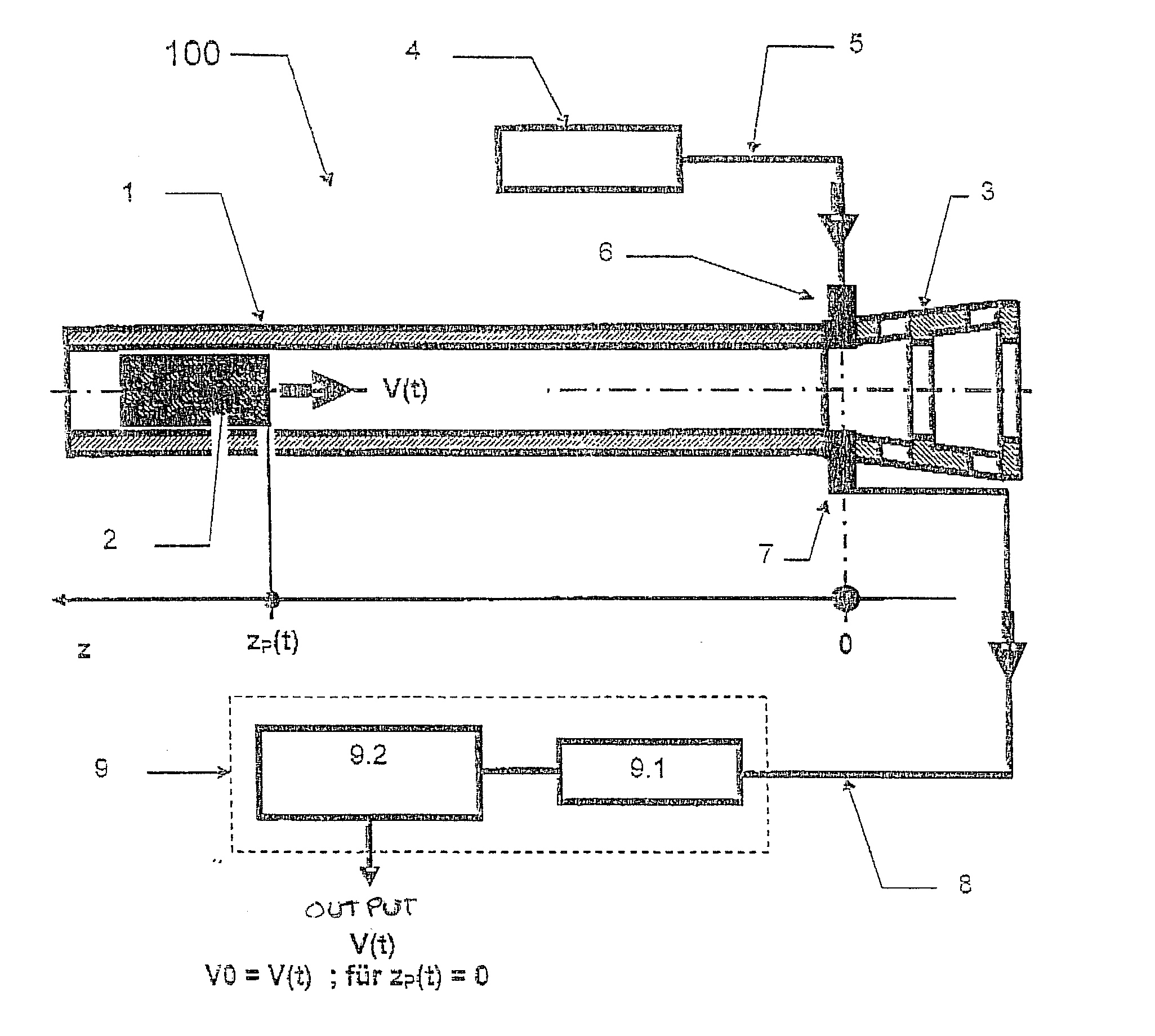Method for measuring the muzzle velocity of a projectile or the like
a projectile and muzzle velocity technology, applied in the field of projectile muzzle velocity measurement, can solve the problems of affecting the accuracy of the measurement device, the need for two sensors to be arranged at a defined spacing, and the instability of the entire weapon, so as to achieve the effect of high frequency stability
- Summary
- Abstract
- Description
- Claims
- Application Information
AI Technical Summary
Benefits of technology
Problems solved by technology
Method used
Image
Examples
Embodiment Construction
[0023]FIGS. 1 and 2 show the basic structure of a measurement device 100 for the measurement method. The measurement device 100 includes a gun barrel 1, here with a muzzle brake 3, an oscillator 4 that is electrically connected through a signal line 5 to a transmit coupler 6 for excitation. A receive coupler 7 is used for signal acquisition and is connected by a cable 8 for the received signal to the receiving unit 9, consisting of a detector 9.1 and a signal processor 9.2. The two couplers 6, 7 are integrated into the muzzle brake 3 and form a coupler pair.
[0024]The oscillator 4 here excites a waveguide mode (TE; TM) through the transmit coupler 6. In this regard, provision is made in this example embodiment that a frequency is selected that is below the cutoff frequency of the relevant waveguide mode. The desired waveguide mode is excited by mechanical and electromagnetic mode selection. The system of the “barrel”1 (FIG. 2, waveguide 1′) and the projectile 2 (FIG. 2, cylinder 2′) ...
PUM
 Login to View More
Login to View More Abstract
Description
Claims
Application Information
 Login to View More
Login to View More - R&D
- Intellectual Property
- Life Sciences
- Materials
- Tech Scout
- Unparalleled Data Quality
- Higher Quality Content
- 60% Fewer Hallucinations
Browse by: Latest US Patents, China's latest patents, Technical Efficacy Thesaurus, Application Domain, Technology Topic, Popular Technical Reports.
© 2025 PatSnap. All rights reserved.Legal|Privacy policy|Modern Slavery Act Transparency Statement|Sitemap|About US| Contact US: help@patsnap.com



